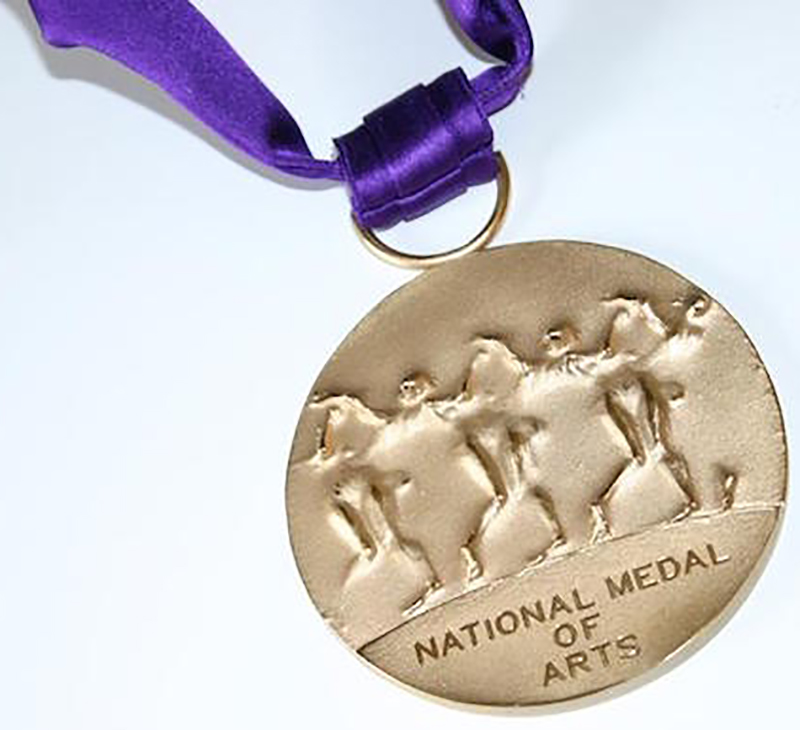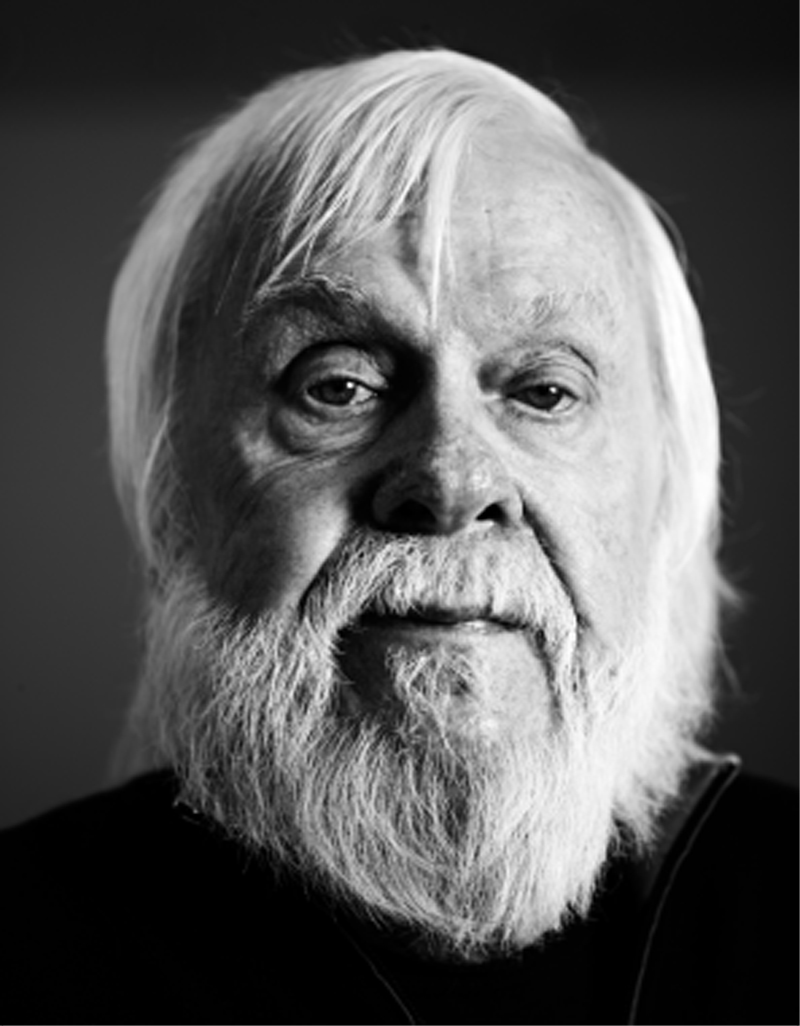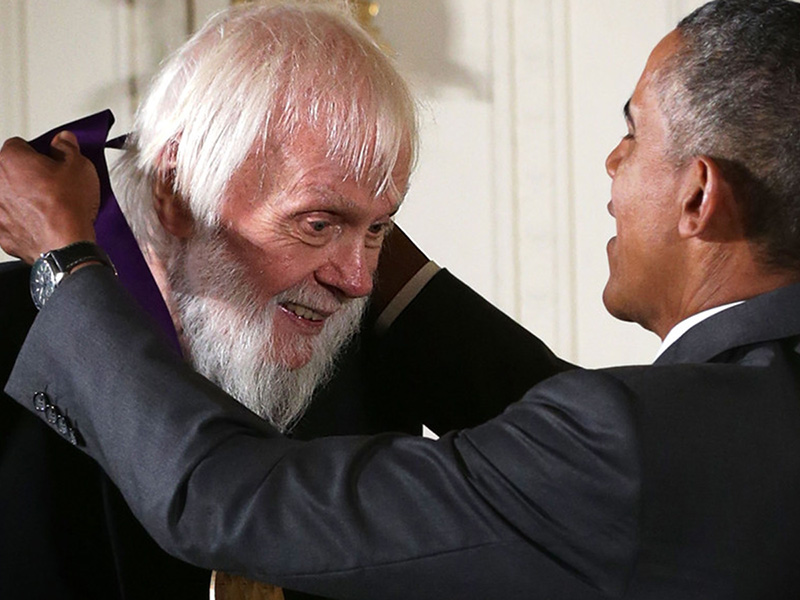|
|
CalArts Founding Faculty
|
Loading...
September 10, 2015 — Los Angeles artist John Baldessari, a founding faculty member of California Institute of the Arts in Valencia, was one of 11 recipients of the National Medal of Arts for 2014. President Barack Obama presented the National Arts and National Humanities Medals in a White House ceremony. Baldessari's commendation reads:
John Baldessari for his contributions as a visual artist. His ambitious work combines photography, painting, and text to push the boundaries of image, making him one of the most influential conceptual artists of our time.
While at CalArts, Baldessari helped establish an innovative education program that has produced many of the world's leading contemporary artists. In recognition, earlier in 2015 CalArts dedicated the Baldessari Studios building on its Valencia campus — a freestanding, 7,500-square-foot building with 16 artist studios, an exhibition space and a large, light-filled painting room. The other national medal recipients for 2014 were author Stephen King, actress Sally Field, the Doris Duke Charitable Foundation, and Ping Chong, Miriam Colón, Ann Hamilton, Meredith Monk, George Shirley, Tobias Wolff and the University Musical Society.
About John Baldessari
"The Spectator is Compelled...," 1967-68, was completed in National City, California, before Baldessari moved to Los Angeles. For the work, Baldessari posed for a photograph that was exposed directly to the canvas. The artist stands in the center of the scene, staring down a city street. The sides of the street mimic the sight lines of traditional painting perspective. In a gesture both comic and revolutionary, Baldessari quotes a composition textbook, telling the viewer what the photograph expects their eyes to do, "to look directly down the road and into the middle of the picture." Balsessari, separating the rules or hidden tricks of an image from the image itself, opened up a world of idea-based art. In "Seashells/Tridents/Frames," 1988, Baldessari assembled a grouping of five black-and-white photographs, cropped or partially covered, that have no obvious relationship to each other. In the rightmost image a cropped man "fishes" with a trident poised over still waters; to the left, a suited man presents ornate picture frames; and central left, a collection of seashells are on display in a cabinet. All serve as metaphors for the contemporary artist's search for choice images, as well as for the presentation, framing, and display of those images, and for the artist's self or identity. Seashells/Tridents/Frames is a contemplation of issues about art making that have fascinated Baldessari and propelled his work for years. In the more recent work "Noses & Ears, Etc. (Part Two): (Green) Face with Nose, (Yellow and Violet) Hands, (Red) Arm and Pistol (with Tie)," 2006, Baldessari continues his interest in often dark themes balanced with visual tricks and humor. A man, maybe a criminal or a hostage, is having his pistol taken away. The use of color and whimsy dissolves the potential threat of the weapon into a complex visual situation.
|
Ed Fella, Graphic Design
Mel Powell, Music Dean & Provost
Charlie Haden, Jazz Studies Founder
Allan Sekula, Photography
Leo Hobaica, Character Animation
Fran Bennett, School of Theater
Mark Trayle, Sound Artist
John Baldessari Studios Dedicated 3/10/2015
Baldessari: National Medal of Arts 2015
Baldessari Obituary 2020
Ravi Rajan 2020
|
The site owner makes no assertions as to ownership of any original copyrights to digitized images. However, these images are intended for Personal or Research use only. Any other kind of use, including but not limited to commercial or scholarly publication in any medium or format, public exhibition, or use online or in a web site, may be subject to additional restrictions including but not limited to the copyrights held by parties other than the site owner. USERS ARE SOLELY RESPONSIBLE for determining the existence of such rights and for obtaining any permissions and/or paying associated fees necessary for the proposed use.













